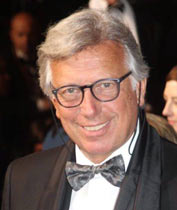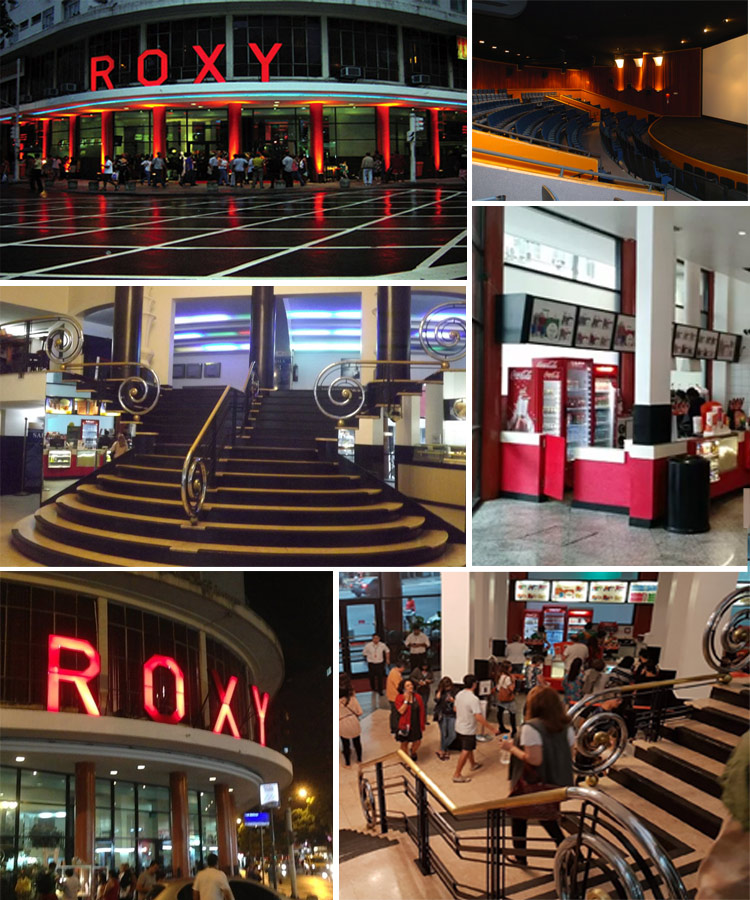
Reg. Trib. Milano n. 418 del 02.07.2007 - Direttore responsabile: Elisabetta Brunella
 |
 |
Dear readers,
Paolo Protti |
SAVE THE DATE!
Our annual joint event at the Berlinale with AG Kino and CICAE
will take place on 9 Feb 2019.
For some years now MEDIA Salles has been investigating a much discussed area but one whose demand for deeper knowledge remains unsatisfied: that of added content for the big screen. In other words, the role that cinemas can play in spreading the enjoyment of art, culture, sport and live entertainment and making them more popular. In addition to the collection of statistical data, the articles published in the various editions of DiGiTalk and the communications presented during cinema events Europewide, MEDIA Salles is now launching a new column starting with a glimpse at the Russian market. From Russia with love Almost ten thousand kilometres separate the Cinema Aurora of Saint Petersburg and the Ussuri of Vladivostock, with a time lag of seven hours. In the first case we are in Europe, a stone’s throw from Finland and Estonia, whilst in the second we’re in Asia: a two-hour flight brings you to Beijing or Pyonyang, whilst it takes eight hours to get to Moscow. Yet their spectators have a lot in common: for example their love of Italy, whose culture, lifestyle and films they adore. More in particular, they are passionately keen on art documentaries from the Bel Paese. We’re told all about it by Maria Bezenkova, Distribution Manager of Nevafilm Emotion, who is to be thanked for the spread of productions “made in Italy”, such as Raffaello: Il Principe delle arti, Firenze e la Galleria degli Uffizi 3D, San Pietro e le Basiliche Papali 3D / Raffaello, the Prince of Arts, Florence and the Uffizi Gallery 3D, Saint Peter’s and the Papal Basilicas 3D. “Art documentaries,” says Maria, “are highly appreciated and are, in fact, becoming increasingly popular, to the extent that Nevafilm Emotion has decided to concentrate all its efforts on this trend. When we began distributing added content - a dozen or so years ago - it was Italian opera, obviously from La Scala, that we brought to Russia’s big screens. Nevertheless, we realized that the potential audience for this genre tends to remain stable: a mature audience, often with limited spending power. There are far more promising prospects for art content, able to attract spectators from different age ranges, generally decidedly younger, with greater economic resources and therefore willing to pay a premium. Indeed, in Russia, too, as on the European markets where MEDIA Salles records trends, added content is sold at a markedly higher average price. A ticket for the première of an Italian art documentary in Moscow costs around 500 roubles (more or less 6.50 euros), two thirds higher than for film premières, offered at 300 roubles (around 4 euros). “To get a more demanding audience - people from 24 to 35 - keen on art, the technical quality must be impeccable and it must be a production made specifically for the big screen, better still if it’s in 3D. Anything that comes over like a TV documentary doesn’t work. We then adapt these productions to our market, inviting experts on the cultural scene here in Russia, or film stars, to lend their voices for the dubbing and voice overs. So for the Uffizi, for example, we were able to count on Michail Borisovic Piotrovskij, Director of the Hermitage, for the Vatican Museums on Andrej Konchalovskij, for Caravaggio on Vladimir Epifantsev.” This strategy allows Nevafilm Emotion to reach from thirty to fifty cities with each of these added content offers, both in European and in Asian Russia, including the regions of Siberia and the Amur. In its Cinema Pobeda (Victory), Novosibirsk, for example, the third largest city in Russia after Moscow and Saint Petersburg and a station on the mythical Transiberian railroad, offers a programme of Italian productions which, alongside seasons of full-length feature films, includes the most successful added content. The cinemas that transform themselves into ambassadors of Italian culture range from specialty theatres to the bigger, more commercial multiplexes, including arthouse or “traditional” cinemas. If it comes as no surprise that in Moscow the Centre for Documentaries is a reference point - a sort of boutique that makes international selections of the genre - it is not so readily expected that the big Russian chains, such as Cinema Park, Formula Kino, Karo and Kinomax (which represent over 22% of the Country’s screens), should include Italian art in their offer. “It is my hope,” continues Maria Bezenkova, “that art productions from Italy will continue and indeed increase - keeping up their technical standards and excellent spectator value - so as to satisfy a growing demand.” While it is true that added content accounts for around 1% of the Russian film market - and this figure may seem negligible - it should not be forgotten that in 2017 Russia took over France’s historical leading role, counting over 213 million spectators. In other words, from the ‘90s up to today, Russia has increased its audiences ten times over and established itself as a market on which the great film-producing countries cannot fail to concentrate. “I’d like to see a stronger offer of Italian classics and titles from the ‘60s and ‘70s. Every year here in Russia there are interesting festivals and contemporary Italian weeks. Comedies and melodramas are very popular but if they could be combined with a glimpse of previous productions, spectator satisfaction could be even further increased," concludes Maria Bezenkova. Adding, "For me, Italy, its cinema and culture are a matter of business and love all in one!" |
This column hosts portraits of cinemas in Europe and the rest of the world which are quite different from one another but have in common the fact that they have all adopted digital projection.
Roxy |
||||||||||
Copa … Copacabana …": Barry Manilow's famous song creeps into my mind and fills my ears, producing an irrepressible sense of cheerfulness, as I land in Rio de Janeiro. (Per leggere il testo in italiano cliccare qui)
|
MEDIA Salles Piazza Luigi di Savoia, 24 - 20124 Milano - Italy Tel.: +39.02.6739781 - Fax: +39.02.67397860 E-mail: infocinema@mediasalles.it |
 |


 whilst wishing you all the very best for the New Year, I should like to present the first 2019 issue of DGT Online Informer.
As you will see, we have chosen to go on investigating a much discussed area but one whose demand for deeper knowledge remains unsatisfied: that of added content for the big screen. In other words, the role that cinemas can play in spreading the enjoyment of art, culture, sport and live entertainment and making them more popular.
In this issue we host an interview with Maria Bezenkova, Distribution Manager of Nevafilm Emotion, a key figure in the distribution of added content on a market like that of Russia, which in 2018 became the biggest in Europe in terms of cinema admissions. Our intention is to continue focussing on the potential of added content throughout 2019, not only by studying the sector, but also by developing the promotional initiatives launched in 2018 with Mallorca Arts on Screen. Our next appointment will take place in Berlin, with an initiative in which AG Kino - the association representing Germany’s art-house cinemas - and MEDIA Salles work together again. For the time being, save the date: 9 February 2019.
Until we meet again in Berlin!
whilst wishing you all the very best for the New Year, I should like to present the first 2019 issue of DGT Online Informer.
As you will see, we have chosen to go on investigating a much discussed area but one whose demand for deeper knowledge remains unsatisfied: that of added content for the big screen. In other words, the role that cinemas can play in spreading the enjoyment of art, culture, sport and live entertainment and making them more popular.
In this issue we host an interview with Maria Bezenkova, Distribution Manager of Nevafilm Emotion, a key figure in the distribution of added content on a market like that of Russia, which in 2018 became the biggest in Europe in terms of cinema admissions. Our intention is to continue focussing on the potential of added content throughout 2019, not only by studying the sector, but also by developing the promotional initiatives launched in 2018 with Mallorca Arts on Screen. Our next appointment will take place in Berlin, with an initiative in which AG Kino - the association representing Germany’s art-house cinemas - and MEDIA Salles work together again. For the time being, save the date: 9 February 2019.
Until we meet again in Berlin!